
Jeep Wrangler Vs. The Competition
The 2026 Jeep Wrangler vs. The Competition: The Standard For Adventure, Reimagined
In the world of adventure-ready vehicles, the conversation doesn't begin until the Jeep Wrangler arrives. For 2026, the legend evolves, integrating next-generation technology and refined capability that further distances itself from capable but ultimately compromised alternatives like the Ford Bronco, Toyota 4Runner, and Land Rover Defender. This isn't just another model year; it's a reaffirmation of a legacy built on authentic, go-anywhere prowess that others can only aspire to achieve.
Unmatched Off-Road Dominance
The 2026 Wrangler's foundation is its class-defying, trail-conquering capability. It is engineered not for occasional dirt roads, but for the most challenging environments on the planet, with hardware that is standard or available that competitors simply cannot match.
- An available 3.0L Hurricane Turbo Six engine delivering over 400 horsepower, providing immense power for dune climbing and high-altitude trails.
- Standard solid front and rear axles on Rubicon models for maximum articulation and durability against rocks and obstacles.
- An updated Selec-Trac® full-time 4WD system and Tru-Lok electronic locking differentials that automatically manage traction for the driver.
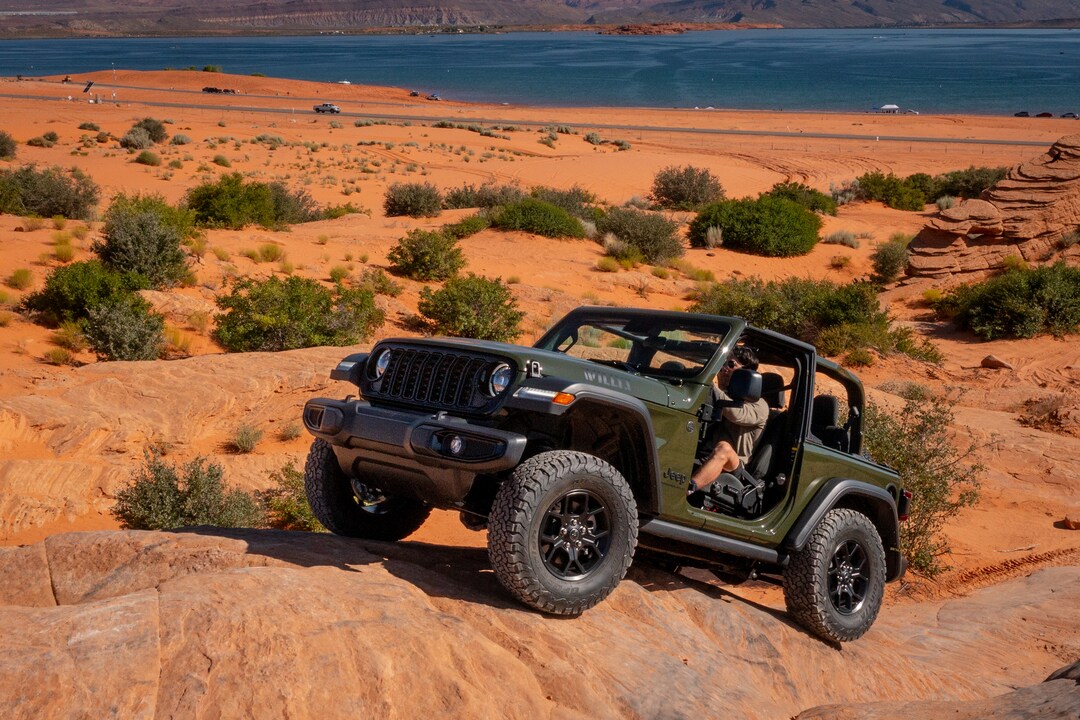
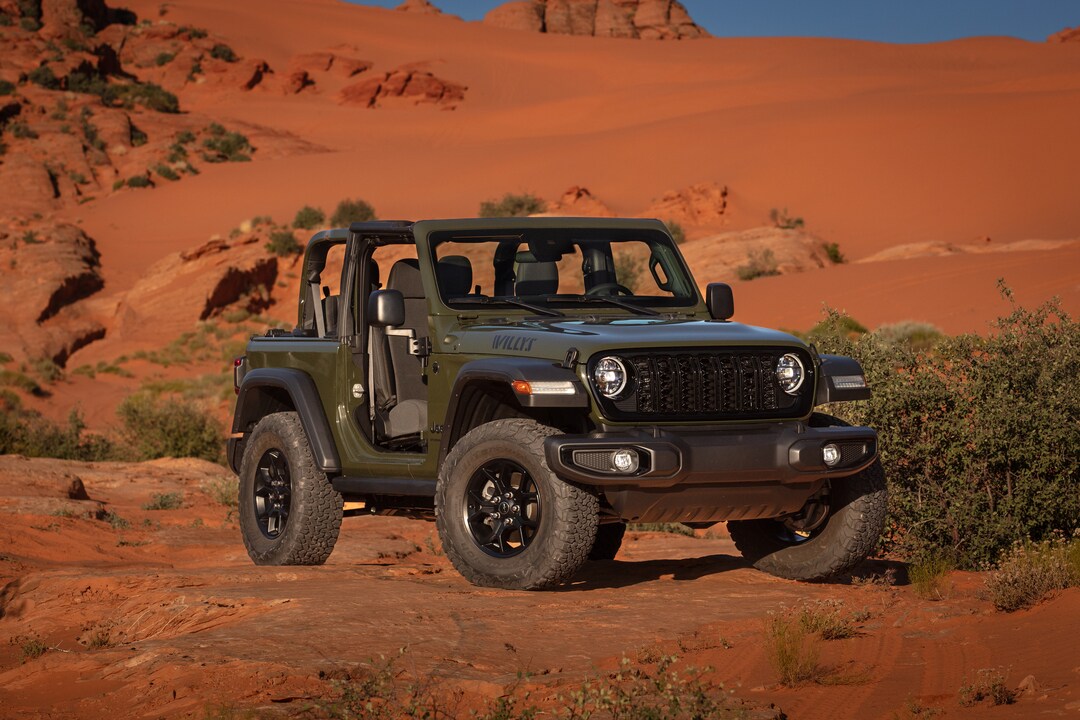
Refined On-Road Dynamics
The Jeep brand has meticulously refined the 2026 Wrangler's on-road behavior, proving that uncompromising capability can coexist with daily-driving civility. Advanced materials and engineering create a quieter, more comfortable cabin without softening its rugged character.
- An all-new, segment-exclusive adaptive suspension system, available on Sahara and Rubicon models, that smooths pavement imperfections while enhancing high-speed off-road stability.
- Significantly reduced cabin noise through acoustic laminated glass and enhanced sealing, making highway travel serene and conversation easy.
- A new, more intuitive Uconnect 6 system with a 14.5-inch panoramic touchscreen that rivals premium luxury vehicles in its clarity and responsiveness.
The Ultimate Open-Air Freedom
While competitors offer sunroofs or removable roof panels, only the Wrangler provides a truly transformative open-air experience directly linked to its military forebears. This is freedom that cannot be optioned onto another vehicle.
- The exclusive one-touch Sky One-Touch Power Top now features a quieter operation and improved insulation for all-weather comfort.
- Easily removable doors with new, integrated storage bags and tool-less designs that make the process simpler than ever.
- A standard fold-down windshield, a unique feature in the global automotive market, for the most authentic open-air driving experience possible.
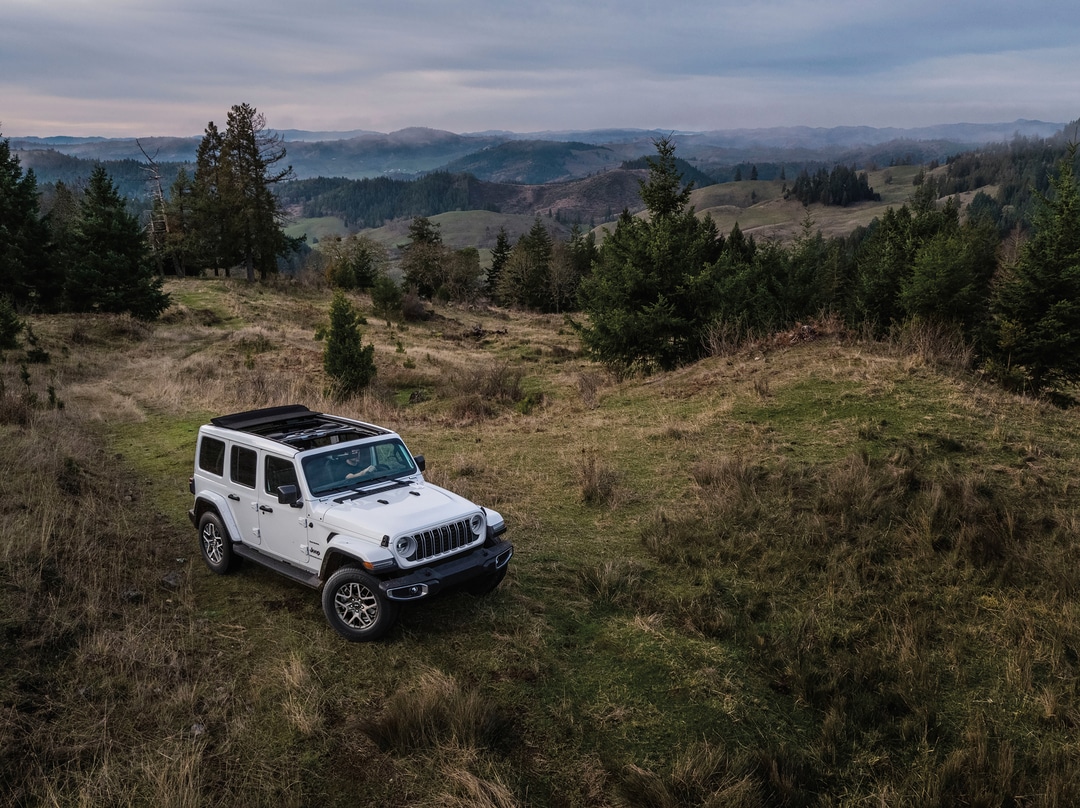
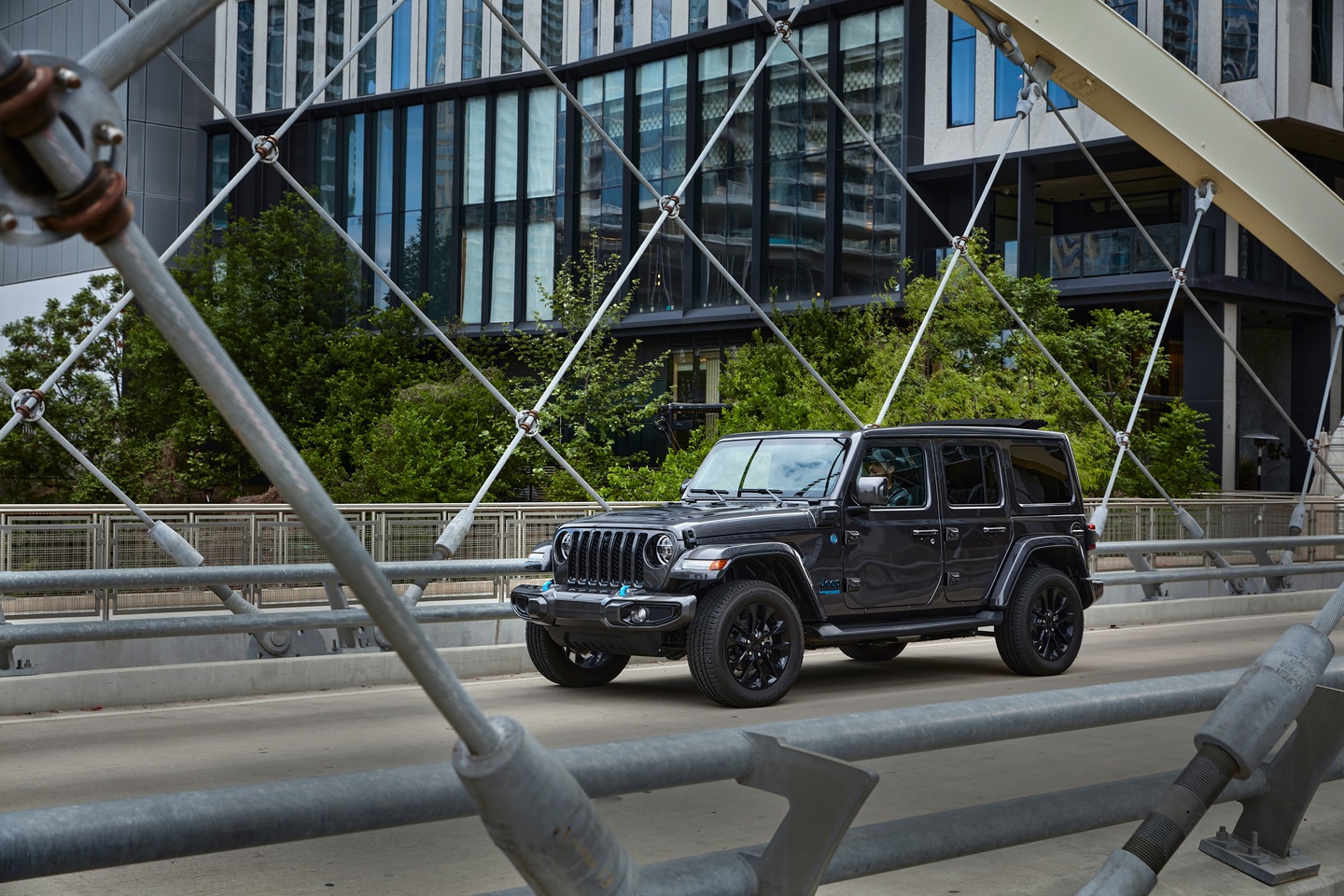
Advanced Adventure Technology
The 2026 Wrangler transforms into a high-tech command center, with features designed to enhance both off-road confidence and on-road connectivity. It's a seamless blend of rugged utility and digital intelligence.
- The new Trail Mapping & Navigation system pre-loads over 4,000 off-road trails with difficulty ratings, community reviews, and points of interest.
- An available 12.3-inch fully digital instrument cluster that can be customized to show critical off-road data like pitch, roll, and tire pressure at a glance.
- An integrated front-facing trail camera with new "Virtual Spotter" technology that suggests optimal steering inputs for navigating extreme obstacles.
Power and Efficiency Redefined
The 2026 Wrangler's powertrain lineup is its most diverse and powerful ever, offering a solution for every type of adventurer, from the green overlander to the power-hungry rock crawler.
- The available 2.0L turbocharged four-cylinder with eTorque now achieves an estimated 27 MPG combined, besting many competitors in real-world efficiency.
- A new, segment-first 4xe plug-in hybrid powertrain with an estimated 50 MPGe and 25 miles of all-electric range for silent, emission-free trail exploration.
- The legendary 6.4L HEMI® V8 in the Wrangler Rubicon 392, producing 470 horsepower, remains the undisputed king of power in its class.
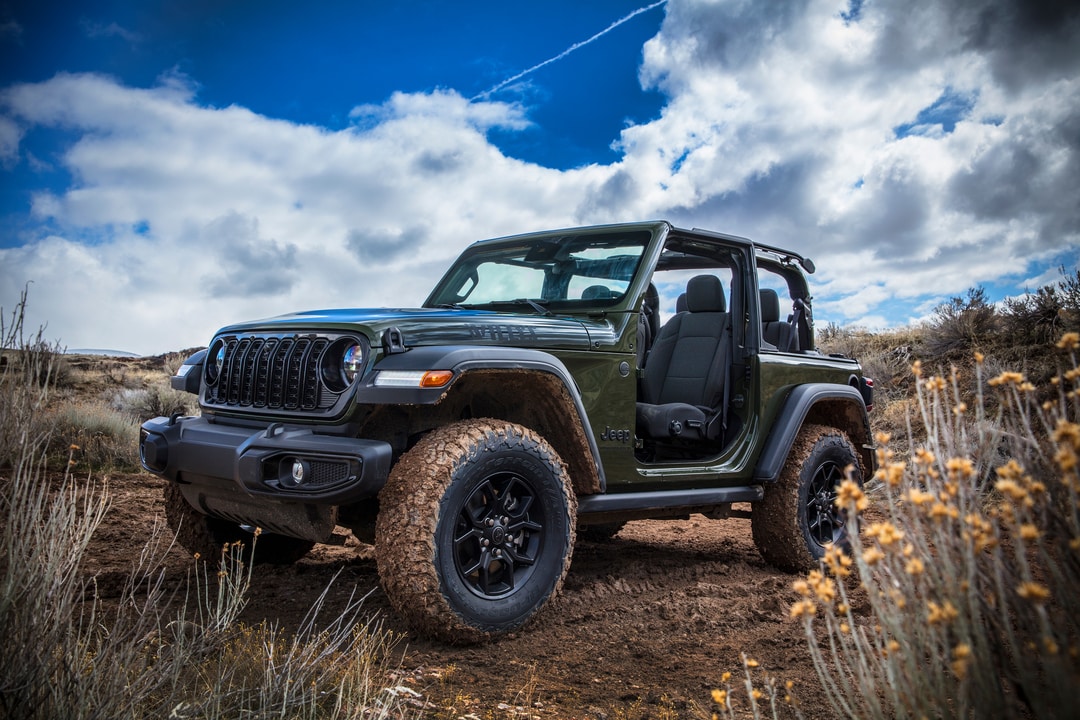
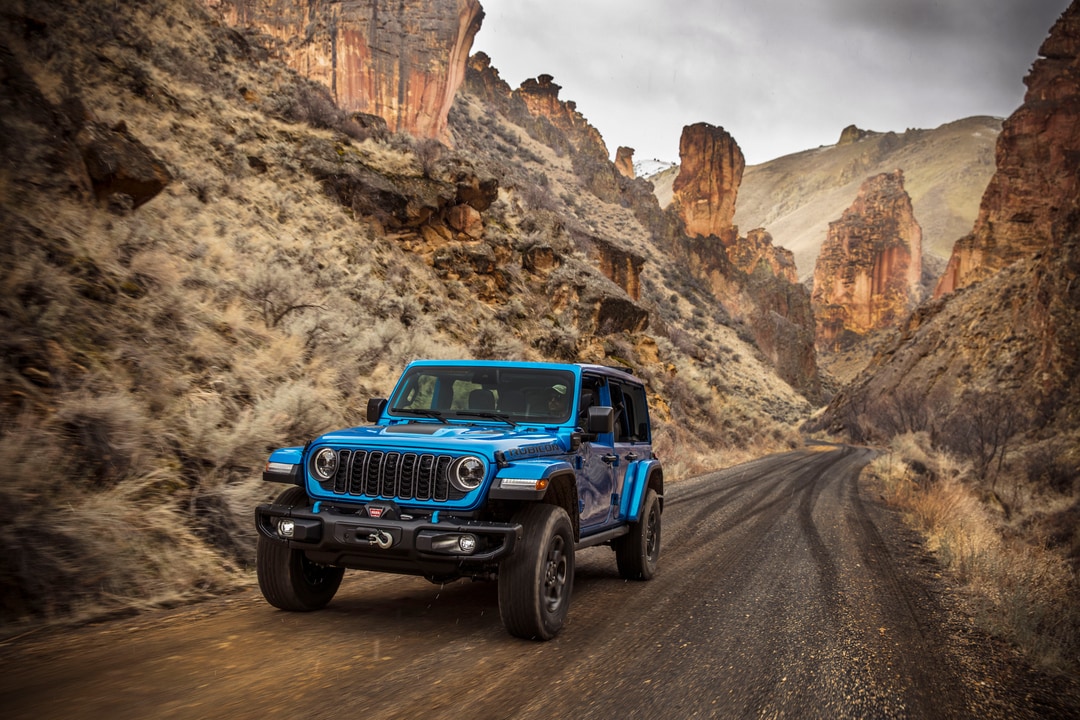
Heritage and Unrivaled Value
Owning a Wrangler is an investment in a legacy. Its iconic design, global community, and legendary resale value are intangible benefits that no competitor can replicate, making it more than just a vehicle; it's a passport to a lifestyle.
- Industry-leading resale value that consistently outperforms the Ford Bronco, Toyota 4Runner, and Land Rover Defender by a significant margin.
- An instantly recognizable silhouette that pays homage to 80 years of innovation while looking decisively toward the future.
- The largest and most passionate owner community in the world, offering unparalleled support, events, and shared knowledge.
Contact Us Today
The 2026 Jeep Wrangler doesn't just compete in the adventure segment; it defines it. While the Ford Bronco, Toyota 4Runner, and Land Rover Defender offer varying degrees of capability, they lack the Wrangler's authentic heritage, transformative open-air freedom, and the sheer depth of its engineering purpose. To understand why the Wrangler remains in a class of its own, you must experience it. Schedule your test drive at Hill-Kelly Dodge Chrysler Jeep Ram today and begin your own legend.
How can we help?
* Indicates a required field